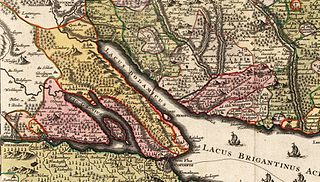| Roman Catholic Prince-Bishops of Minden (1180-1554) |
| Reign and episcopate | Portrait | Name | Birth and death
with places | Reason for
end of office | Notes |
|---|
| 1170–1185 | | Anno of Landsberg | *unknown – 1185* | death | |
| 1185–1206 |  | Thietmar
also: Thiemo, modernised: Dietmar | Bavaria, *unknown – 5 March 1206* | death | saint, feast day: 5 March |
| 1206–1209 | | Henry
as Henry II | *unknown – 30 July 1209* | death | |
| 1209–1236 | | Conrad of Rüdenberg
also: of Diepholz
as Conrad I | *unknown – 26 June 1236* | death | |
| 1236–1242 | | William of Diepholz
as William I
(Counts of Diepholz) | *unknown – 2 May 1242* | death | brother of the next |
| 1242–1253 | | John of Diepholz
(Counts of Diepholz) | *c. 1175 – 13 January 1253* | death | brother of the former |
| 1253–1261 | | Wedekind of Hoya
as Wedekind I
(Counts of Hoya) | *unknown – 1261* | death | son of Henry II, Count of Hoya |
| 1261–1266 | | Cuno | | | |
| 1266–1275 | | Otto
as Otto I | Stendal, *unknown – 1275* | | |
| 1275–1293 | | Volkwin of Schwalenberg | *c. 1240/1245 – 4 May 1293*, | death | brother of Ludolph's brother's or sister's spouse |
| 1293–1295 | | Conrad of Wardenberg
as Conrad II | *unknown – 1295* | death | |
| 1295–1304 | | Ludolph of Rostorf
also: Rosdorf | Hardenberg, *c. 1240–1304*, Minden | death | brother of Volkwin's brother's or sister's spouse
through his sister Jutta granduncle of the next |
| 1304–1324 | | Godfrey of Waldeck
(House of Waldeck) | *c. 1255/1260 – 14 May 1324* | death | brother of Adolf II of Waldeck; by his granduncle's wife also grandnephew of Ludolph
moved the prince-episcopal residence to Petershagen castle |
| 1324–1346 | | Louis of Brunswick-Lüneburg
(House of Welf) | *c. 1300 – 18 July 1346*, Walsrode | death | son of Otto the Strict |
| 1346–1353 | | Gerard of Schauenburg
as Gerard I
(House of Schaumburg) | *unknown – 1 January 1353* | death | son of Adolphus VI, Count of Schauenburg and Holstein-Pinneberg |
| 1353–1361 | | Dietrich Kagelwit also Kugelweit, Dietrich of Portitz
as Dietrich III | Stendal, *c. 1300 – 17 December 1367 | became Prince-Archbishop of Magdeburg in 1361 (as Dietrich I) | before Bishop of Schleswig (1351–1353) |
| 1361–1366 | | Gerard of Schaumburg
as Gerard II
(House of Schaumburg) | *unknown – 25 September 1366* | | son of Adolphus VII, Count of Schauenburg and Holstein-Pinneberg [1] |
| 1366–1368 | | Otto of Wettin
also: of Golßen
as Otto II
(House of Wettin) | *unknown – 16 July 1368* | death | son of Otto, Burgrave of Wettin and Golßen |
| 1369–1383 | | Wedekind of Schalksberg
also: Wittekind vom Berge
as Wedekind II | *unknown – 1383* | death | son of Wedekind IV, Lord of Schalksberg |
| 1384–1397 | | Otto of Schalksberg
also: vom Berge
as Otto III | *unknown – 1 January 1398* | resigned | last heir of the Lordship of Schalksberg, which he bequeathed to the Minden see; son of Wedekind IV, Lord of Schalksberg |
| 1397–1398 | | Gerard of Hoya
as Gerard III
(Counts of Hoya) | | | |
| 1398 | | Marquard of Randegg
also: Randeck | *unknown – 28. December 1406* | became Prince-Bishop of Constance in 1398 | nephew of Patriarch Marquard of Randeck |
| 1398–1402 | | William of Buchen
as William II | | death | |
| 1402–1403 | | sede vacante | | | |
| 1403–1406 | | Otto of Rietberg
as Otto IV | *unknown – 1406* | death | son of Otto II, Count of Rietberg |
| 1406–1436 | | Wilbrand of Hallermund
also: Wulbrand | *? – 23 December 1436* | death | before prince-Abbot of Corvey Abbey (1398–1406), last heir of the County of Hallermund, son of Wilbrand, Count of Hallermund, |
| 1436–1473 | | Albert of Hoya
German: Albrecht
(Counts of Hoya) | | | son of Eric I, Count of Hoya |
| 1473–1508 | | Henry of Schauenburg
as Henry III
(House of Schaumburg) | | | son of Otto II, Count of Schauenburg and Holstein-Pinneberg |
| 1508–1529 | | Francis of Brunswick-Wolfenbüttel
as Francis I
(House of Welf) | *1492 – 25 November 1529*, Wolfenbüttel | death | son of Henry IV |
| 1530–1553 |  | Francis of Waldeck
as Francis II
(House of Waldeck) | Sparrenberg Castle, *1491 – 15 July 1553*, Wolbeck (a part of today's Minden) | death | also Prince-Bishop of Münster (1532–1553) and of Osnabrück (1532–1553) |
| 1553–1554 |  | Julius of Brunswick and Lunenburg, Wolfenbüttel
(House of Welf) | Wolfenbüttel, *29 June 1528 – 3 May 1589*, Wolfenbüttel | resigned, became heir to the Principality of Wolfenbüttel | Prince of Wolfenbüttel (1568–1589) and of Calenberg (1584–1589) |
|



















